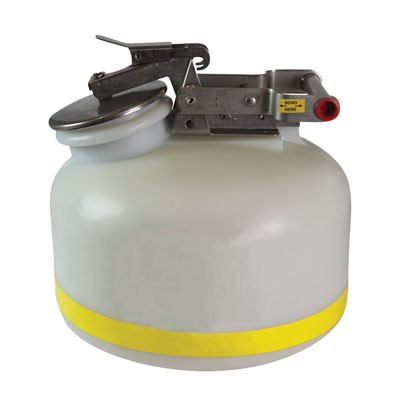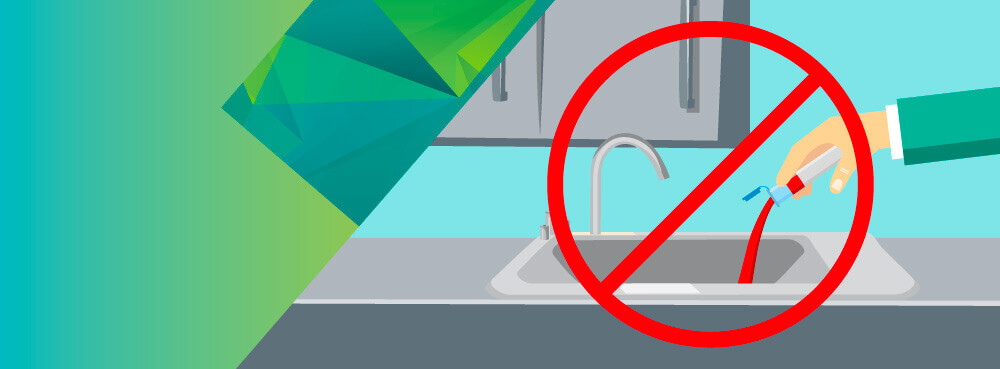Comprehensive Liquid Waste Disposal: Solutions for Residences and Businesses
Comprehensive Liquid Waste Disposal: Solutions for Residences and Businesses
Blog Article
How Liquid Garbage Disposal Works: An In-depth Introduction of Methods and Technologies Employed

Overview of Liquid Waste Types
The complexity of liquid waste types necessitates a complete understanding of their attributes and implications for disposal. Liquid waste can broadly be categorized right into a number of kinds, consisting of industrial, community, agricultural, and harmful waste. Each group shows distinctive properties, calling for certain monitoring approaches to minimize ecological and health and wellness risks.
Industrial fluid waste stems from making processes and frequently contains a series of impurities, such as hefty metals, solvents, and organic substances. Local liquid waste, mainly making up wastewater from houses and business establishments, contains organic matter, nutrients, and virus (industrial wastewater treatment). Agricultural liquid waste, including drainage from farms, may have plant foods, pesticides, and pet waste, positioning risks to water top quality and ecological communities
Dangerous fluid waste is defined by its poisoning, reactivity, or possible to trigger injury. This classification consists of compounds like acids, bases, and particular chemicals that necessitate rigorous handling and disposal protocols. Recognizing these diverse liquid waste kinds is essential for creating effective disposal approaches and guaranteeing compliance with ecological regulations. Appropriate category and characterization are vital for implementing ideal treatment methods and minimizing the negative influences on public wellness and the setting.
Physical Therapy Approaches

Screening is the first action, where larger bits and debris are removed from the fluid waste using displays or grates. In sedimentation storage tanks, heavier bits work out at the base, forming a sludge layer, while the made clear fluid can be further dealt with.
Filtering is another important method that entails passing the liquid via porous products, such as sand or membranes, to record smaller particles. This action enhances the quality of the fluid, making it appropriate for subsequent therapy processes.

Chemical Treatment Techniques
Chemical treatment strategies are necessary for successfully managing liquid waste, especially in addressing dissolved and colloidal impurities that physical approaches may not effectively remove. These strategies utilize numerous chemical agents to counteract, precipitate, or transform unsafe substances right into less hazardous forms.
One common approach is coagulation and flocculation, where chemicals such as alum or ferric chloride are contributed to promote the gathering of put on hold particles. This procedure enhances sedimentation, permitting simpler elimination of the resulting sludge. Additionally, oxidation processes, utilizing representatives like chlorine or ozone, are used to damage down intricate natural you can try these out compounds and pathogens, making the waste much safer for discharge or more therapy.
Neutralization is an additional crucial method, which changes the pH of acidic or alkaline waste streams to neutral levels, preventing potential damage to downstream systems and the atmosphere. In addition, progressed oxidation procedures (AOPs) utilize mixes of oxidants and ultraviolet light to break down relentless toxins, achieving a higher degree of treatment effectiveness.
Organic Therapy Procedures
Organic therapy procedures play a critical function in the monitoring of fluid waste by using bacteria to break down natural matter and lower impurity degrees. These procedures can be broadly classified into cardio and anaerobic treatments, each using certain microbial neighborhoods to accomplish efficient waste degradation.
Cardio therapy entails using oxygen to help with the break down of organic materials by germs. This process is frequently applied in triggered sludge systems, where oygenation tanks supply a conducive atmosphere for microbial development, leading to the oxidation of natural contaminants. The resultant biomass can be separated from dealt with effluent with sedimentation.
On the other hand, anaerobic treatment takes place in the lack of oxygen, relying upon various germs to break down raw material. This method is specifically helpful for high-strength waste, as it generates biogas, a renewable resource resource, while decreasing sludge production. Technologies such as anaerobic digesters are often employed in local and industrial applications.
Both cardiovascular and anaerobic organic treatments not just minimize the ecological impact of fluid waste but additionally help with source healing, making them vital parts of sustainable waste monitoring strategies. Their my blog performance, effectiveness, and versatility support their extensive execution throughout various markets.
Arising Technologies in Disposal
Cutting-edge approaches to liquid waste disposal are swiftly advancing, driven by developments in modern technology and a raising emphasis on sustainability. Among these emerging innovations, membrane layer bioreactors (MBRs) have actually gained traction for their capacity to incorporate biological therapy with membrane filtration, leading to top notch effluent that can be recycled in numerous applications. MBRs allow smaller sized impacts and more efficient procedures compared to standard systems.
One more appealing advancement is making use of anaerobic food digestion incorporated with nutrient recuperation innovations, which not just deals with fluid waste but also produces biogas and recoups beneficial nutrients like nitrogen and phosphorus. This double benefit enhances resource performance and lowers environmental influence.
In addition, progressed oxidation processes (AOPs) are being adopted for the degradation of complicated natural contaminants. These techniques utilize effective oxidants and stimulants to break down impurities at the molecular degree, using a highly effective remedy for difficult waste streams.
Furthermore, the integration of expert system and artificial intelligence in waste management systems is maximizing functional efficiency and predictive upkeep, causing decreased costs and enhanced environmental conformity. These modern technologies show a significant change towards even more reliable and sustainable fluid waste disposal practices.
Verdict
In conclusion, efficient fluid waste disposal demands a comprehensive understanding of different methods and modern technologies. By continuously other progressing these techniques, it becomes possible to deal with the growing difficulties connected with liquid waste, eventually contributing to environmental defense and source healing.
Fluid waste disposal is a crucial aspect of environmental administration, calling for a thorough understanding of numerous techniques and technologies tailored to various waste kinds. Fluid waste can extensively be categorized right into several types, including industrial, municipal, farming, and unsafe waste. Agricultural fluid waste, consisting of overflow from farms, might contain fertilizers, chemicals, and pet waste, posturing threats to water top quality and ecosystems.
Various physical treatment approaches play a critical role in taking care of fluid waste successfully - industrial wastewater treatment.In verdict, efficient liquid waste disposal necessitates a comprehensive understanding of numerous methods and innovations
Report this page